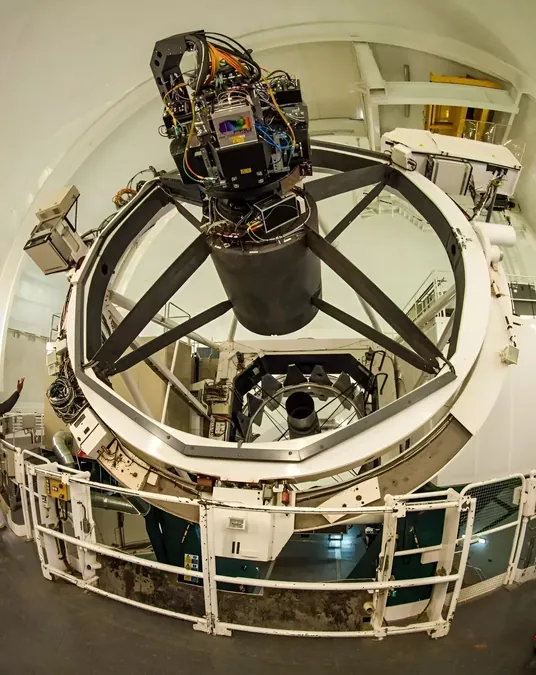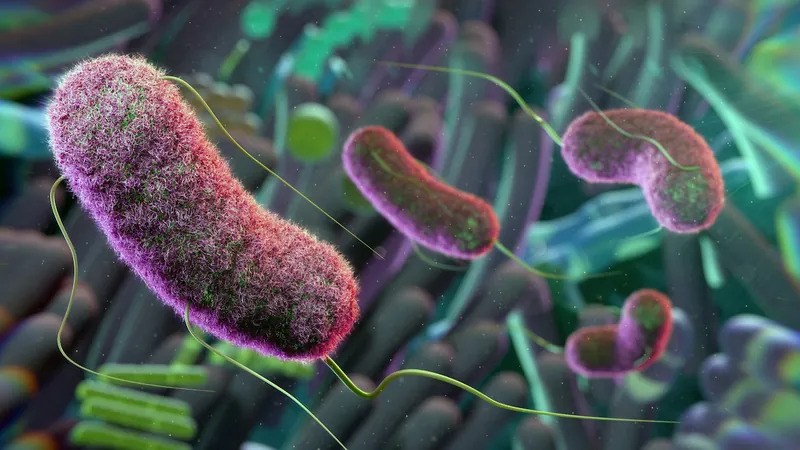
Unlocking Cosmic Secrets: New Catalog of Distant Galaxies Reveals Universe's Formation Mysteries
2024-09-18
Groundbreaking Cosmic Distance Catalog Released
A groundbreaking cosmic distance catalog has just been released, providing unprecedented information on millions of distant galaxies. This revolutionary tool promises to enhance our understanding of universe formation and the enigmatic forces at play, such as dark matter and dark energy.
Development and Collaboration
Developed through the Physics of the Accelerating Universe Survey (PAUS), this extensive catalog resulted from a collaborative effort led by the Institute of Space Sciences (ICE-CSIC) and involving 14 institutions across six countries, including the renowned University of Portsmouth. The team collected data over 200 nights from 2015 to 2019, using the cutting-edge PAUCam camera on the William Herschel Telescope located in La Palma.
Scope of the Catalog
Covering a substantial area of the sky, equivalent to about 250 full moons—approximately 50 square degrees—the catalog details information for a staggering 1.8 million astronomical objects. These insights will aid astronomers in constructing more accurate maps of the universe's structure and exploring the mysteries behind dark matter and dark energy, which make up around 95% of the universe but remain poorly understood.
Significance of the Project
Enrique Gaztañaga, Director of the PAU Survey and Professor at the University of Portsmouth's Institute of Cosmology and Gravitation, emphasized the significance of this project, stating, "The PAU Survey offers a groundbreaking approach to creating cosmic maps, made possible through the design and development of a novel instrument and a dedicated survey to collect and analyze data in ways never done before."
Understanding Dark Energy
One of the most profound challenges in cosmology is current uncertainty surrounding dark energy, which is responsible for the universe's accelerated expansion. The PAUS catalog delivers essential information that enhances our comprehension of this mystery by accurately characterizing millions of galaxies up to distances exceeding 10 billion light years.
High-Fidelity Data and Calibration
The high-fidelity data in this catalog not only marks an important resource for astronomers but also assists in calibrating other cosmological surveys, ultimately offering a more cohesive understanding of the universe.
Role of PAUCam Camera
The PAUCam camera, specifically engineered to provide accurate distance measurements of galaxies, plays a crucial role in studying the universe's expansion within the context of dark matter and dark energy. This project expands on previous deep imaging efforts from the Canada-France-Hawaii Telescope Lensing Survey (CFHTLenS) and the Kilo-Degree Survey (KiDS) conducted by the European Southern Observatory's VLT Survey Telescope in Chile. By merging these exceptional datasets, PAUS delivers incredibly precise distance and temporal information for deep space objects.
Photometric Redshift Measurements
This catalog represents a monumental leap forward in cosmic research, as it provides photometric redshift measurements, allowing scientists to ascertain distances for galaxies as they were billions of years in the past.
Innovative Filter System
To achieve these remarkable measurements, the PAU camera utilizes 40 distinct filters across various wavelengths of light. This innovative approach involves capturing images of the same area multiple times through different color filters. As galaxies distance themselves from us, the wavelengths of light they emit shift toward the red end of the spectrum, a phenomenon known as redshift. This redshift is crucial for calculating the distance of astronomical objects from Earth.
Statement from Lead Author
David Navarro-Gironés, a Ph.D. student at ICE-CSIC and lead author of the article detailing this catalog, noted, "The accuracy of distance measurements for galaxies directly correlates with the number of filters employed. Each filter reveals unique information about a galaxy's characteristics. The outstanding advantage of PAUS lies in its combination of 40 different filters, allowing for precise distance measurements critical for understanding the universe's structure."
Future Research Plans
The details of this significant release are documented in two illuminating articles published in the Monthly Notices of the Royal Astronomical Society—one focused on measuring distances and the other on calibration of the PAUS data.
Looking ahead, the research team plans to unveil additional studies focusing on galaxy clustering and intrinsic galaxy shape alignments. These efforts will further unravel the complexities of how our universe formed and evolved over cosmic time.
Stay tuned as we embark on this exciting journey to uncover the secrets of the cosmos!


 Brasil (PT)
Brasil (PT)
 Canada (EN)
Canada (EN)
 Chile (ES)
Chile (ES)
 España (ES)
España (ES)
 France (FR)
France (FR)
 Hong Kong (EN)
Hong Kong (EN)
 Italia (IT)
Italia (IT)
 日本 (JA)
日本 (JA)
 Magyarország (HU)
Magyarország (HU)
 Norge (NO)
Norge (NO)
 Polska (PL)
Polska (PL)
 Schweiz (DE)
Schweiz (DE)
 Singapore (EN)
Singapore (EN)
 Sverige (SV)
Sverige (SV)
 Suomi (FI)
Suomi (FI)
 Türkiye (TR)
Türkiye (TR)